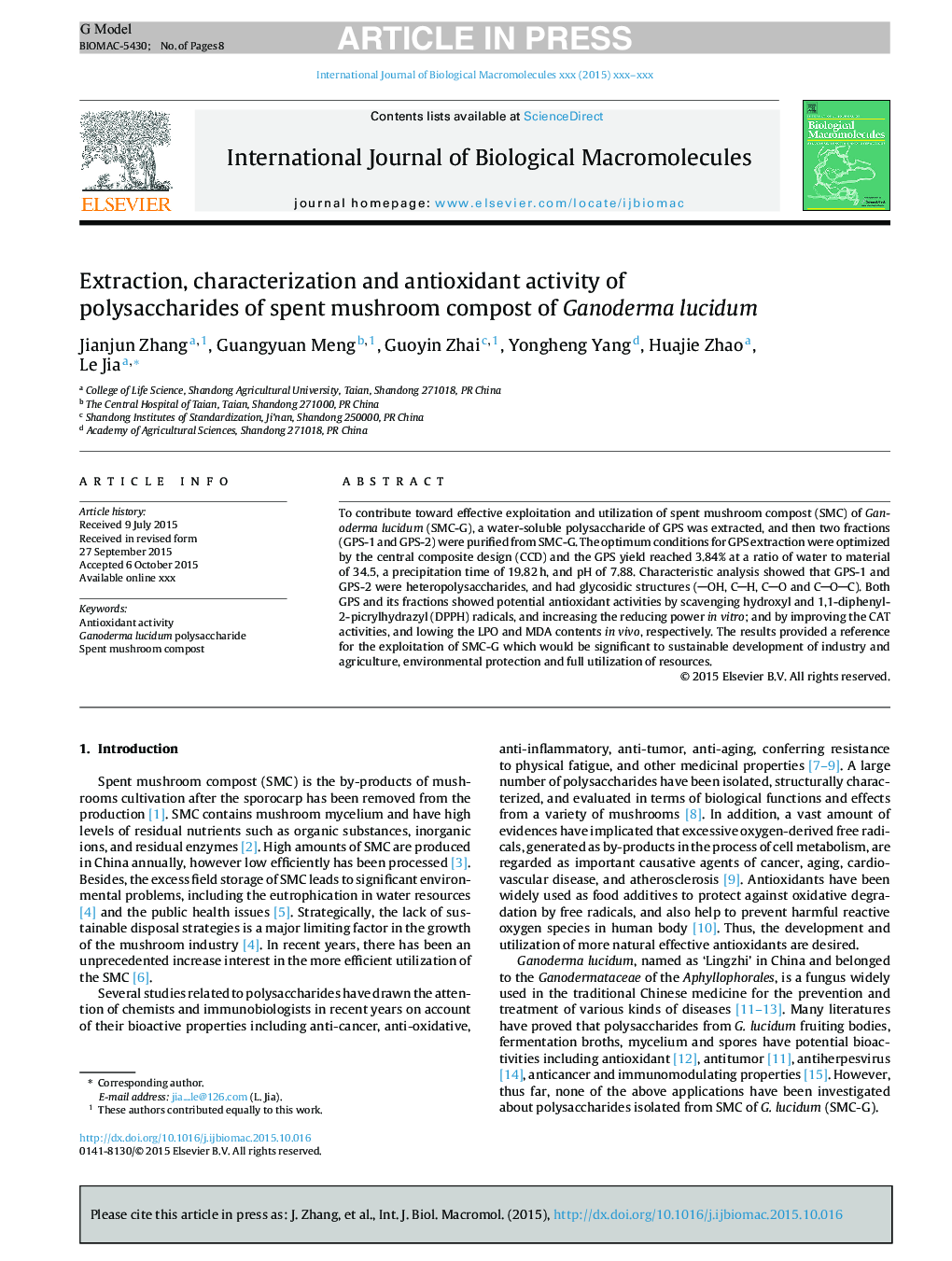| Article ID | Journal | Published Year | Pages | File Type |
|---|---|---|---|---|
| 8330141 | International Journal of Biological Macromolecules | 2016 | 8 Pages |
Abstract
To contribute toward effective exploitation and utilization of spent mushroom compost (SMC) of Ganoderma lucidum (SMC-G), a water-soluble polysaccharide of GPS was extracted, and then two fractions (GPS-1 and GPS-2) were purified from SMC-G. The optimum conditions for GPS extraction were optimized by the central composite design (CCD) and the GPS yield reached 3.84% at a ratio of water to material of 34.5, a precipitation time of 19.82Â h, and pH of 7.88. Characteristic analysis showed that GPS-1 and GPS-2 were heteropolysaccharides, and had glycosidic structures (OH, CH, CO and COC). Both GPS and its fractions showed potential antioxidant activities by scavenging hydroxyl and 1,1-diphenyl-2-picrylhydrazyl (DPPH) radicals, and increasing the reducing power in vitro; and by improving the CAT activities, and lowing the LPO and MDA contents in vivo, respectively. The results provided a reference for the exploitation of SMC-G which would be significant to sustainable development of industry and agriculture, environmental protection and full utilization of resources.
Related Topics
Life Sciences
Biochemistry, Genetics and Molecular Biology
Biochemistry
Authors
Jianjun Zhang, Guangyuan Meng, Guoyin Zhai, Yongheng Yang, Huajie Zhao, Le Jia,
